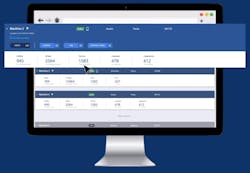A few years ago, Automation World conducted a survey of its readers to find out how widespread remote access use was and how associated technologies were primarily being used. Results of that survey showed that 72% of respondents were using remote access technologies to gain entrée to plant equipment and data and, of those who had yet to implement remote access technology, 46% said they planned to do so in the near term.
That survey is due for an update next year as part of our regular editorial survey process to see how application has or hasn’t changed in the intervening years. I suspect that the current pandemic is boosting use of these technologies far faster than normal adoption rate increases might predict.
A primary driver of this trend is the travel restrictions companies are implementing in reaction to COVID-19. As Jason Sprayberry, director of strategy and business development-IoT at HMS, notes, “a host of companies such as Nestlé, L'Oreal, and Unilever have implemented travel bans affecting over 532,000 people. However, machines still break or need servicing by OEMs, often under required warranty commitments and service level agreements.”
Direct access
Using HMS’s Ewon as an example of the remote access technology that can be used for remote equipment access, Sprayberry said, “Rather than sending service technicians into a potentially unsafe area to troubleshoot a problem, HMS Ewon solutions provide a simple device that can be plugged into industrial equipment and quickly accessed via a secure connection directly to the asset.”
He explained that this “direct access” means “almost any function that can be done locally can be done from virtually anywhere.” Functions such as diagnostics, programming, and equipment monitoring are possible from a remote workstation or mobile device using Ewon.
Designed for industrial environments, the Ewon device features a DIN-rail mounted design for use extreme temperature environments, wired or wireless (WiFi or 3G/4G cellular) WAN connectivity, and a range of LAN/local options for plugging into industrial devices.
To reduce the difficulties associated with integrating any new technology into an automated industrial system, a key aspect of remote access technologies is their ability to support industrial Ethernet and serial protocols. Sprayberry pointed out that HMS Ewon products are “device aware and natively support most industrial Ethernet, TCI/IP, and serial protocols such as Modbus/ModbusTCP, Allen Bradley DF1/EtherNet/IP, OPC UA, MQTT, BacNet, and more. This proven native integration means that, rather than spending time troubleshooting the connectivity to the device, the service technician can quickly login and get to work.”
The use of industry standards like OPC UA and MQTT also mean that Ewon can connect with IoT Platforms such as Microsoft Azure IoT, AWS IoT Hub, Siemens Mindsphere, OSIsoft PI, Inductive Automation’s Ignition, and Rockwell/PTC ThingWorks, Sprayberry added.
Security
As with any Internet-connected technology, security is a primary concern. Sprayberry noted that Ewon “does not reside on the automation network and is naturally firewalled from the from existing control systems.”
Ewon uses industry standard OpenVPN technologies using a firewall friendly transport that requires little or no IT changes, Sprayberry said. “The Talk2M infrastructure used in Ewon is ISO 27001 and STAR certified and undergo regular security audits to ensure industrial strength security,” he said.
User level access can also be controlled with Talk2M, which provides varying levels of access to different device functions. “For example, an admin might be able to update programming, while an adviser may only be able to monitor the machine’s data,” Sprayberry said.
Beyond basic access
Sprayberry said that remote access technologies can be used to address 60-70% of operating problems, avoiding the need for support personnel to travel during a pandemic or even during normal operations. This ability can deliver significant costs savings for companies, considering that the “average cost in North America to send a field technician onsite to troubleshoot a customer machine is $2,200 per trip,” he added.
As industrial companies take a closer look at remote access, they should also be aware of the other capabilities these technologies can provide. “HMS solutions, for example, can also provide deeper levels of machine data monitoring to enable key ‘just in time’ insights based on key performance indicators with real-time alerts via emails and text,” said Sprayberry. “Routine operator rounds are often too late to warn of an impending problem. Ewon solutions provide data logging and custom programmable notifications, which can monitor the factory equipment for anomalies, and provide an early warning indicator of possible problems before they arise.”
Leaders relevant to this article:



